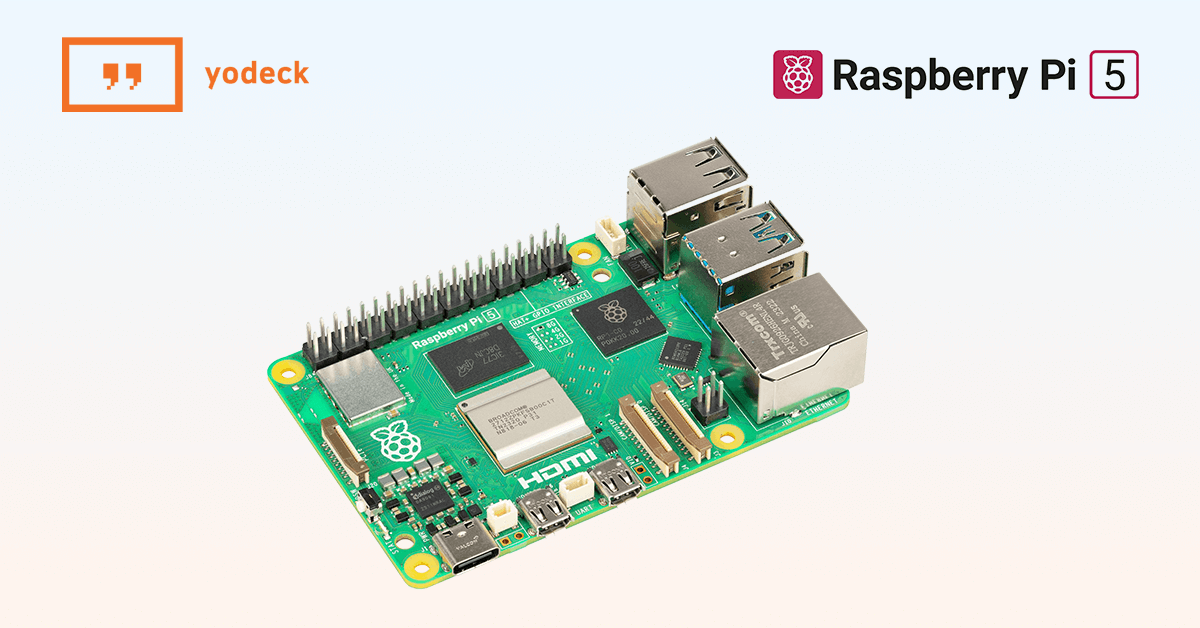Since our first line of code back in 2014, we have engineered Yodeck to work on the Raspberry Pi. When Raspberry Pi 2 was announced in 2015, we had already positioned ourselves advantageously, allowing us to launch the best digital signage service available for the Raspberry Pi 2 within a nine-month window. Since then, we have witnessed the launches of Raspberry Pi 3 and Raspberry Pi 4 in 2016 and 2019 respectively, each bringing significant performance improvements that enabled us to deliver an even better experience to our customers.
However, the Raspberry Pi 5 launch was different.
Like its predecessors, Raspberry Pi 5 opens up a wide array of new possibilities for digital signage. That’s why we were eager to share our thoughts online. Yet, reality turned out to be slightly different. Among the exciting new features and performance enhancements, two major changes signaled a drastically deteriorated efficiency for Yodeck.
The first one was the removal of the hardware H.264 decoder. Since most videos used on Yodeck are still encoded in H.264, this results in reduced CPU power due to H.264 software-based decoding. We were aware of this issue from the Pi 5 launch and we expected its impact to be minimal for our operations. But unfortunately, it was further amplified by the second change.
The move from proprietary APIs to standard Linux APIs is a significant shift. Previously, the Yodeck Player used DispmanX, a Broadcom-specific API that enabled us to talk to the hardware compositor of the Raspberry Pi. This enabled us to create overlays on top of regular windows and provide a buttery smooth ticker (scrolling text) unaffected by CPU usage. With RPi 5, DispmanX is no longer available. Therefore, using the compositing window manager that comes with the Raspberry Pi OS results in slow rendering, preventing us from providing the same flawless performance.
In theory, we could rewrite most of our RPi-targeted code in our player to directly access the compositor through DRM. However, it would require a lot of effort and even if we undertook this challenging task, the outcome might still not match the performance of the RPi 4. In the past, the amazing engineering team at Raspberry Pi has consistently released game-changing updates and we remain optimistic that these efforts will eventually result in positive developments for the digital signage sector. For the time being, the Raspberry Pi 5 is not a viable option for us.
Nevertheless, the RPi5 works great for some use cases such as full-screen content without layouts. Therefore, we worked on releasing a Raspberry Pi 5 Player. We also plan to backport this new Player to RPi4 to have a current OS and continue providing crucial OS updates to all users. It goes without saying that we will continue to monitor the work being done by the engineering team at Raspberry Pi to improve performance and incorporate such updates as soon as they are released!
We expect our Raspberry Pi 5 Player to be available as a public beta by Q3-Q4 2024. In the meantime, we have already started working on backporting it to Raspberry Pi 4.
Stay tuned for future updates!
